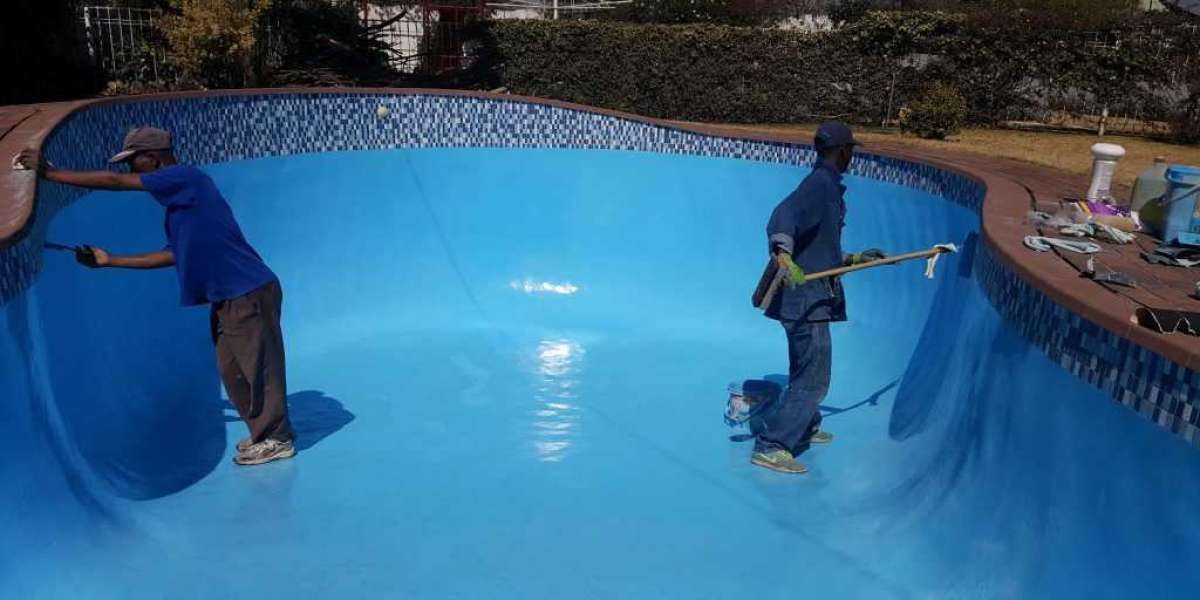A swimming pool is more than just a place to cool off during hot summer days; it’s a backyard oasis, a centerpiece for gatherings, and a significant investment in your home. However, as with any investment, time and use will take their toll. One of the most crucial components of a swimming pool is its plaster finish, which provides a smooth, watertight surface. Over time, this plaster can deteriorate, crack, or become stained, diminishing the pool's aesthetics and functionality. Pool plaster refinishing is an essential maintenance task that can restore your pool’s original beauty and extend its lifespan. In this comprehensive guide, we will explore everything you need to know about pool plaster refinishing, from understanding the signs of deterioration to the steps involved in the refinishing process.
Understanding Pool Plaster and Its Importance
Pool plaster is the final layer applied to the pool's shell, creating a smooth, durable surface that is both waterproof and aesthetically pleasing. It is typically made from a mixture of cement, sand, and water, with added pigments or aggregates to achieve various colors and textures. This plaster layer plays a vital role in protecting the underlying structure of the pool, preventing leaks, and providing a comfortable surface for swimmers.
However, despite its durability, pool plaster is not immune to wear and tear. Over time, exposure to chemicals, fluctuating water temperatures, and constant use can lead to the degradation of the plaster surface. Common issues include cracking, pitting, scaling, and discoloration, all of which can detract from the pool's appearance and usability. When these problems arise, pool plaster refinishing becomes necessary to restore the surface to its original condition.
Signs That Your Pool Needs Plaster Refinishing
Recognizing the signs that your pool needs plaster refinishing is crucial to maintaining its longevity and safety. Here are some common indicators that it might be time to consider refinishing your pool's plaster:
Surface Discoloration: Over time, pool plaster can develop stains due to the accumulation of minerals, chemicals, and organic matter. These stains can range from light discoloration to more severe dark spots. While some stains can be removed with cleaning, persistent or widespread discoloration often indicates that the plaster is nearing the end of its life.
Cracks and Fissures: Small cracks in the plaster are common as the pool ages, especially if it has been subjected to fluctuating temperatures or heavy use. These cracks can grow over time, leading to more significant structural issues if left unaddressed. Refinishing the plaster can help to seal these cracks and prevent further damage.
Rough Texture: As plaster ages, it can become rough or pitted, making the surface uncomfortable for swimmers. A rough texture can also lead to algae growth, as it provides a suitable environment for microorganisms to thrive. Refinishing the plaster restores the smooth texture, making the pool more enjoyable to use and easier to maintain.
Scaling and Efflorescence: Scaling occurs when calcium deposits build up on the pool's surface, often due to imbalanced water chemistry. Efflorescence, a white, powdery substance, can also appear on the plaster as water evaporates and leaves behind mineral deposits. Both issues are unsightly and can be difficult to remove without refinishing the plaster.
Water Leaks: In severe cases, deteriorated plaster can lead to water leakage, which not only wastes water but can also cause damage to the pool's structure and surrounding areas. If you notice a drop in water levels that is not due to evaporation, it could be a sign that the plaster has compromised the pool's integrity.
The Pool Plaster Refinishing Process
Refinishing pool plaster is a multi-step process that requires expertise and precision. Here’s a step-by-step overview of what the process typically involves:
Draining the Pool: The first step in refinishing a pool is to drain the water. This is done carefully to prevent any structural damage to the pool. Once the pool is drained, it is thoroughly cleaned to remove any debris, algae, or existing stains.
Surface Preparation: After cleaning, the old plaster surface is prepared for refinishing. This may involve chipping away loose or damaged plaster, smoothing rough areas, and applying an acid wash to clean and etch the surface. Proper surface preparation is crucial for ensuring the new plaster adheres well and provides a long-lasting finish.
Applying the New Plaster: The new plaster mixture is then applied to the pool surface. This can be done using traditional white plaster or more advanced materials like colored plaster, quartz, or pebble finishes, depending on the desired look and durability. The plaster is applied evenly across the pool, ensuring a smooth, consistent surface.
Troweling: After the plaster is applied, it is smoothed and compacted using trowels. This step is essential for achieving a uniform surface and removing any air pockets that could compromise the plaster’s integrity. Troweling also helps to create a polished finish that enhances the pool’s aesthetic appeal.
Curing: Once the plaster is in place, it needs time to cure properly. The curing process typically takes several days, during which time the pool is filled with water to prevent the plaster from drying out too quickly. Proper curing is vital for ensuring the plaster’s longevity and resistance to cracks or other issues.
Water Balancing and Maintenance: After the plaster has cured, it is important to balance the pool water’s chemistry to protect the new plaster. This involves adjusting pH levels, alkalinity, and calcium hardness to prevent scaling, staining, or etching of the plaster surface. Regular maintenance is essential to keep the pool in optimal condition and extend the life of the refinished plaster.
Choosing the Right Plaster Finish
When refinishing your pool, you have several options for the type of plaster finish to use. Each material offers different benefits in terms of aesthetics, durability, and maintenance requirements. Here are some of the most popular options:
White Plaster: Traditional white plaster, made from a mixture of cement and marble dust, is a classic choice for pool surfaces. It provides a clean, smooth finish and is relatively affordable. However, it is more prone to staining and requires regular maintenance to keep it looking its best.
Colored Plaster: For those looking to add a splash of color to their pool, colored plaster is an excellent option. Pigments are added to the plaster mix to create a variety of hues, from soft blues to bold greens. While colored plaster offers a unique aesthetic, it can be more susceptible to fading over time, especially in pools with high chemical levels.
Quartz Finish: A quartz finish is created by mixing crushed quartz with plaster, resulting in a more durable and stain-resistant surface. Quartz finishes are available in a wide range of colors and textures, making them a popular choice for those looking to enhance their pool’s appearance and longevity.
Pebble Finish: Pebble finishes are made by mixing small, smooth stones with plaster, creating a textured surface that is both visually appealing and highly durable. Pebble finishes are resistant to staining, etching, and fading, making them an excellent choice for pools in harsh climates or with heavy use.
Polished Aggregates: Polished aggregate finishes combine plaster with crushed stones or glass beads to create a luxurious, polished look. These finishes are not only beautiful but also extremely durable and resistant to staining. They require less maintenance than traditional plaster and can last for many years with proper care.
The Cost of Pool Plaster Refinishing
The cost of pool plaster refinishing can vary widely depending on factors such as the size of the pool, the type of plaster finish chosen, and the complexity of the project. On average, homeowners can expect to pay between $4,000 and $10,000 for a complete refinishing job. While this may seem like a significant investment, it is important to consider the long-term benefits of refinishing, including improved aesthetics, enhanced durability, and the prevention of costly repairs down the line.
Conclusion
Pool plaster refinishing is a crucial maintenance task that can breathe new life into your swimming pool. Whether your pool has become discolored, rough, or cracked, refinishing the plaster will restore its beauty and functionality, allowing you to continue enjoying your backyard oasis for years to come. By understanding the signs of deterioration, choosing the right plaster finish, and following the refinishing process carefully, you can ensure that your pool remains a source of pride and enjoyment for your family and friends.








